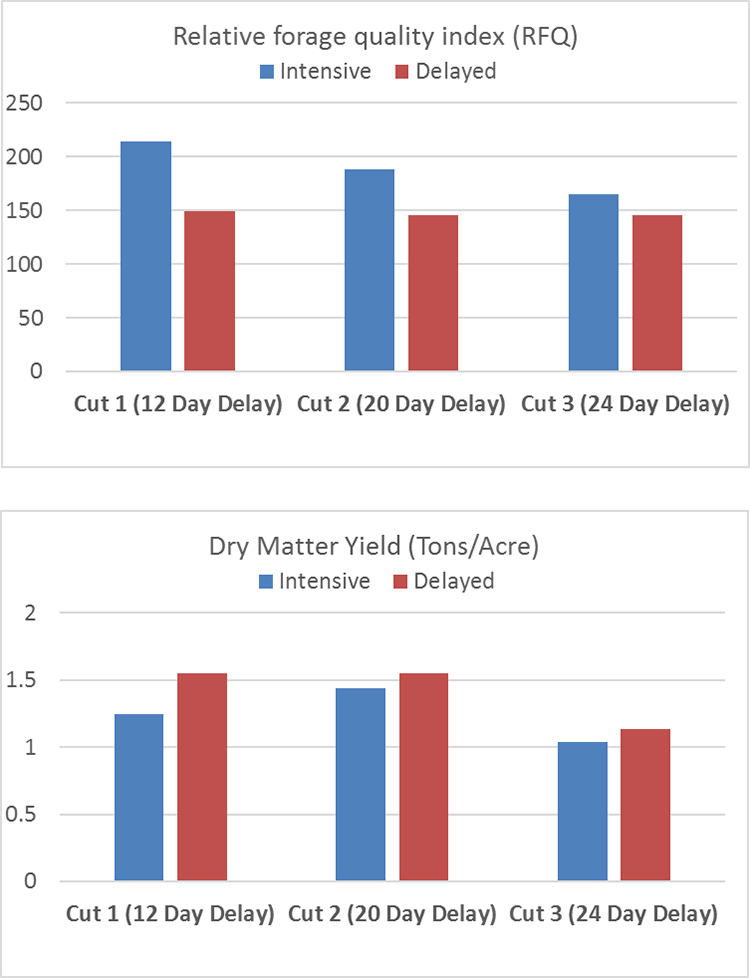
Harvest management is known to be one of the primary factors that influences forage quality on the farm . . . especially when it comes to the hay crop. It is also a factor that can be easily manipulated without significant direct cost to the farm. That is why putting a little thought into harvest timing for hay crop forage could pay dividends for high-producing dairy herds.
As hay crop forages mature, forage quality drops. This means that feeding value suffers whenever harvesting is delayed for some reason. Since biomass may continue to swell, you could easily end up with a bunch of forage that has limited feeding value. In the Northeast, potential quality loss is greatest for first and second cutting, so these are cuts that you should pay special attention to if you are looking to maximize forage quality.
The figures show the decline in legume/grass forage yield and quality when harvest is delayed by 12 days for the first harvest and a longer regrowth period is used for subsequent cuts. Even though the delay increased as the summer progressed, the lost forage quality was lower when the hot and dry weather set in. The potential yield benefit for delaying this harvest was also low, but not noticeably different from the potential yield benefit of delaying second cutting. So, if things do get delayed, whether by choice or misfortune, hopefully it occurs when quality potential is low.









